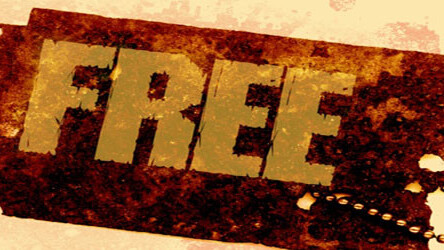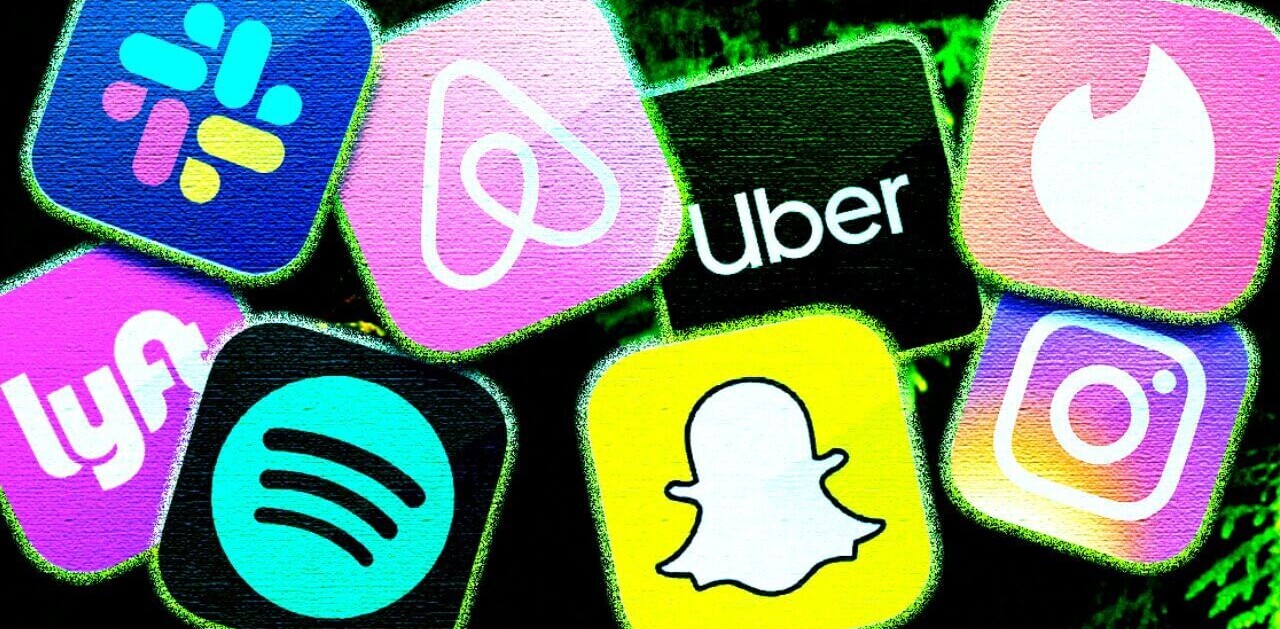
I have been using my iPhone for about a year now. Since playing around and reviewing apps are both my passion and way of making a living, I have installed and deleted hundreds of apps over this period of time. I only buy those apps that make it into top tier blogs. Never ever have I bought an app on an impulse or just because it costs less than a dollar. While it is common for me to overspend when am out with friends or while I am shopping, when it comes to buying that $0.99 or $1.99 app, I will suddenly don the Warren Buffett hat and start doing intense background checks.
Now, let us come to the case of free apps. Every couple of days, I frequent the app store to see which apps are trending and if there are new apps for me to try. If I find a free app (with a great looking icon, that’s a mandatory requirement), I will immediately download it, try it for a few minutes and in about 90% of cases, will delete them within the hour of downloading it. That has happened to Path, Instagram, Stickybits, Tumblr etc.
The Evernote app is still on my phone only because their green Elephant logo looks great against my wallpaper. Labelbox is there for the same reason too. I use Twitter for iPhone all day long but for some reason I have got Hootsuite installed but I never use it anyway.
So, the general trend is I pay very little attention to free apps. So do lot of people. It’s not because the apps are not good, in fact the ones I have mentioned here all awesome. I might use some of them sometime down the road, but still I delete them anyway. There could be only one reason for this careless attitude. Free apps are not receiving the respect they deserve. If there was a trial period attached to an app, instead of being completely free, am pretty sure I would have thought twice before downloading and deleting them.
Suddenly one day I decided to develop apps for the iOS platform (despite having Zero programming knowledge or the inclination towards learning Objective C). I started to look around which apps are doing well and how people are getting the word out about their apps. Every iOS (or any other smartphone app for that matter) app that gets venture capital is available for free. These days it has become a fashion to run a business with no real business model to begin with. That’s chic, hip and cool. So, I did not give much weightage to those type of free apps.
But I stumbled upon a lot of indie developers making brilliant, quality paid apps while occasionally releasing free apps. That surprised me a bit. Free apps help marketing the brand and in turn puts their paid apps in front of the users. That’s the argument I usually hear from people. Then why isn’t Tapbots releasing any free apps? It’s not like they received tens of millions of dollars in VC funding like Color did.
Just a few days ago, Tapbots released their Twitter app for iOS. The world went berserk over the announcement and there were a lot of people asking “Did you try it?”. Since I got this question multiple times in one day, I checked if the $1.99 price tag has suddenly been slashed. No, it wasn’t. Why in the world would I try an app that costs so much, when the official Twitter client that is all kinds of awesome is available for free? If there was a lite app like Twittelator, I would have given it a go. (But I eventually checked Tweetbot out on my friend’s mobile and found it to be built like an unpolished Android app).
So, in essence, I have immense respect towards a crippled lite version and have no regards for a full featured app that’s available for free. Weird, isn’t it? I decided to ask what developers thought of this phenomenon and if a lot of others behave like me too. I contacted Zach & Trey of Inov8 apps, the makers of iVite and Ivan of Coppertino, the makers of Wallpaper Wizard with a bunch of questions.
Invo8 develops apps for the iOS app store and Coppertino develops for the Mac app store. I particularly chose them because both the studios distribute free and lite apps. I interviewed them with two sets of questions. One for free apps and the other for lite apps. While the questions were largely unique for each category, the theme was the same: how helpful are free and lite apps for their brand image and sales? Here is what they have to say:
Why Develop a free app in the first place?
I was eagerly expecting an answer to this question, because that’s what this quest was all about. But Ivan threw a curveball stating that he developed, Forismatic, their free mac app just for fun. That wasn’t in the list of answers I was expecting, but apparently that’s why everyone is unique.
Folks at Inov8 stated that with over 450,000 apps in the App Store, free apps help put the brand in front of people.
The verdict is mixed, but the argument that free apps act as a marketing tool proves sound.
Running Advertisements
The next question was if their free apps gained traction, will they start displaying ads. Inov8 is already running ads in their lite version and if iAds were to be introduced for Mac Apps, Ivan might consider taking the leap.
It’s good to learn that developers don’t think of advertising as an element that ruins user experience.
Paid Promotions
On a question about spending from their own pockets for promoting the free app, Coppertino answered in the negative. They don’t have an ad budget at the moment. Inov8 on the other hand, rolls them into the same advertising budget of the paid app. The latter’s view is that free apps help people see the value of their paid apps.
Boost in Sales
When their free apps top the charts Coppertino sees a strong uptick in their paid app sales. They say it’s natural – people come to the app’s page and see their other apps and check them out.
Inov8 also say that free apps have a great role to play in the sales of paid apps.
Will there be more free apps?
This one is the clincher. Whatever they say about their past endeavors, it is their future development plans that show how far successful their free app marketing campaign actually is.
Both the developers stood their ground and confirmed that they will be developing free apps whenever they release a paid app.
Despite the skepticism of people in the sidelines like me, the real players have spoken loud and clear. Free apps are a viable marketing tool and they are here to stay.
Then came the topic of lite apps. As well know now, lite apps are feature restricted versions of their paid counterparts made available for free for potential users to test drive the app.
Conversion Rate of Lite Apps
Ivan says, “Our rate is pretty low and is somewhere around 5 to 10%, depending on the price and special deals”. He further adds, ”But that also depends on how limited your free version is – Wallpaper Wizard lite has enough wallpapers for a few months of the lazy changing that’s why lot of people keep using the lite one”.
On the other hand, Inov8 has a much lesser conversion rate of about 2%. This they attribute to the feature gap between lite and paid versions of the app. “The feature-gap between the free and paid versions is not that large, however. As we add features to the premium version and increase that gap, we hope to see a larger conversion rate.”
Staying Power
Wallpaper Wizard has not been on sale long enough to say, but so far most of their installs are active and people are downloading wallpapers from time to time.
Folks at Inov8 while lauding my question, admitted that they are not keeping track of that data at present, but they plan to do it some time in the future.
Role of Lite Apps in Sales
“When we released the lite version a while ago (a month or so after the full went on sale) we saw a huge boost in sales. Looks like people feel safer to try before they buy”, says Ivan for my question if lite apps help boost sales.
Inov8 released the lite and paid version simultaneously, so there is no real data to compare. However, Zach opines, “We believe the free version puts our app in front of users that otherwise would not even consider using the app. ”
Usable Feedback
These days negative feedback hurts a brand more than ever. Do comments from the lite app feedback section hurt paid apps? Ivan doesn’t think so. On the other hand, Zach strongly believes that negative feedback of any form hurts a lot and he has seen quite few examples of that too.
Trey from Inov8 insists that poor planning from the developer at the development stage of the app might be the cause for negative feedback. He goes on to say that developers should ensure that the core functionality is intact in both the free and paid versions and limit only the extra features for the paid version.
Piracy
Coppertino does not track piracy with any special tools. They just track activations and compare them to the App Store stats. From what they see there aren’t any pirates using their apps. Good for them!
Zach and Trey have a couple of interesting observations in this regard. Trey says, “The size of the jailbreaking community is growing exponentially, especially since the recent court decision was handed down. If your app is good, it is going to get cracked. We do not subscribe to the theory that every cracked app download results in a lost sale. Most of the time, the pirates wouldn’t have paid for the premium version anyway”. I am not sure what other developers have to say about piracy, but if I were a developer, I would be sharing Trey’s pragmatic vision too.
So there you have it. Free and lite apps help the developers get brand recognition and traction. And the business model is actually sustainable. What’s your take on this?
Get the TNW newsletter
Get the most important tech news in your inbox each week.





